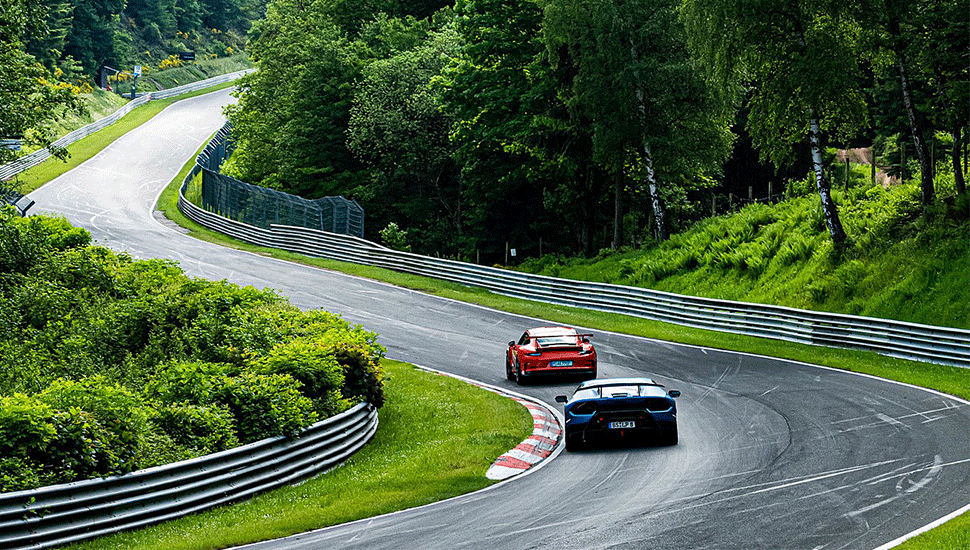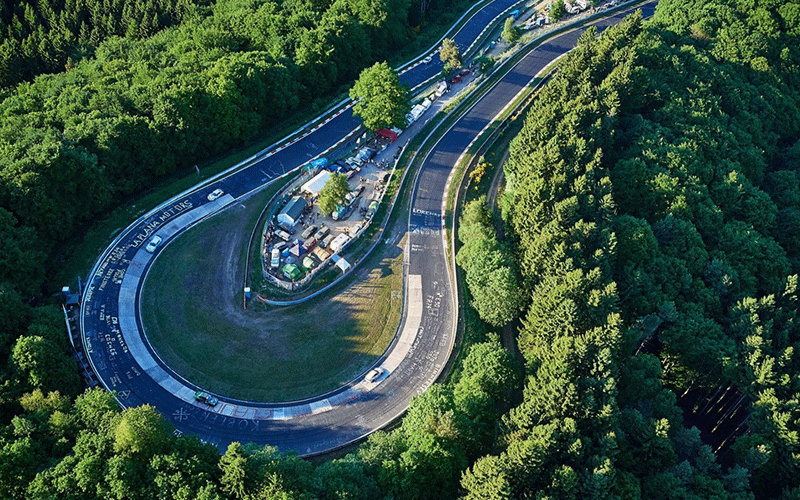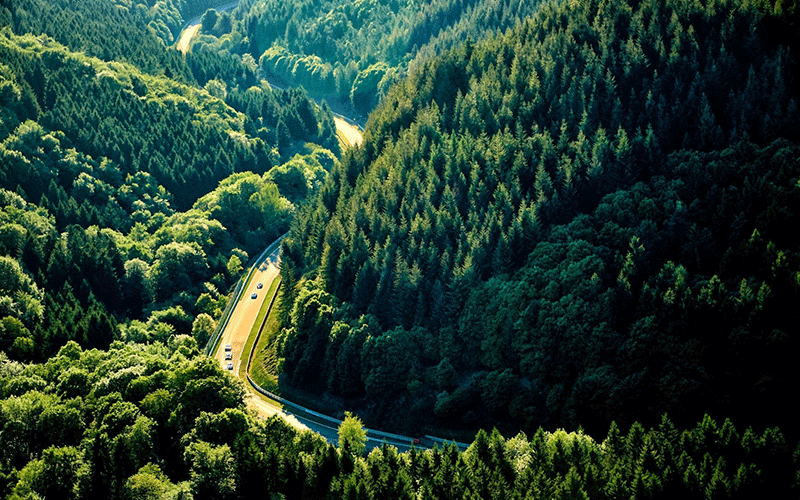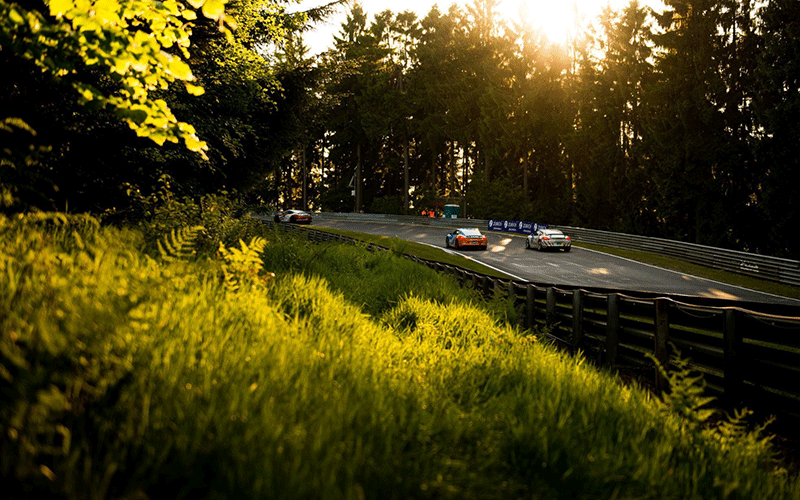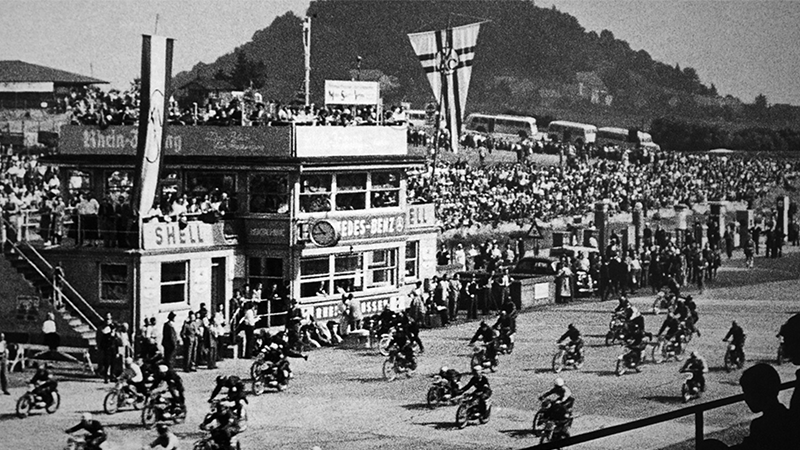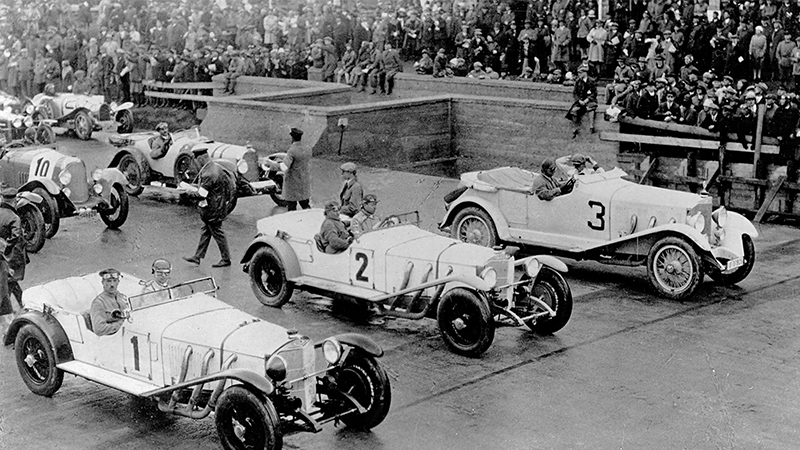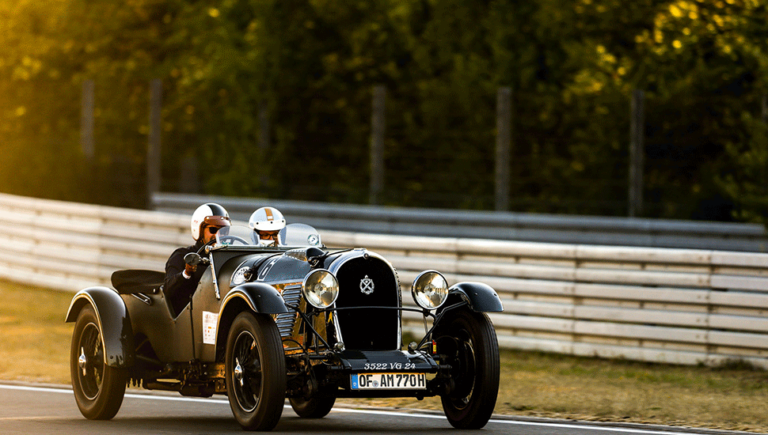In certain corners of our world, time seems measured by different units—not hours, minutes, or seconds, but by heartbeats and the sweeping hands of stopwatches. The Nürburgring is undoubtedly one such place.
Nestled amidst the endless green of the Eifel forests, this 20.8-kilometer stretch of grey tarmac unfurls like a giant ribbon wrapped around rolling hills. It’s far more than mere asphalt and concrete—it’s hallowed ground, a dream, and sometimes a nightmare for those brave enough to push themselves and their machines to the absolute limit.
When racing driver Jackie Stewart christened this place “The Green Hell,” he wasn’t simply giving it a nickname—he was precisely describing the essence of the Nordschleife: an unforgiving circuit that pardons no mistakes, where the lush greenery lining both sides of the track creates a terrifying contrast with the scorched black rubber marks on the surface and the screaming symphony of V8, V10, and V12 engines attempting to conquer 73 bends and 300 meters of elevation change.
Each lap here is a silent dialogue between steering wheel, throttle pedal, and road—a conversation only those who’ve experienced it can fully comprehend: the feeling of the tachometer needle brushing the redline as speed, technique, and courage blend in a life-and-death dance across the tarmac.
Birth and Inauguration
Cradled in the misty embrace of the Eifel mountains, the Nürburgring is both racetrack and monument to human aspiration. Born from the economic crisis following World War I, when the Eifel region was mired in poverty, the project began as a job creation initiative spearheaded by Otto Creutz, district chairman of Adenau.
In 1925, the first pickaxes tore into the Eifel soil, commencing the journey to create one of motorsport’s wonders. More than 3,000 workers with calloused hands and dreams of a better future enthusiastically labored for over 3 million hours to craft a technical masterpiece that would wind through treacherous hills. The “Green Hell” gradually took shape, coiling like a massive serpent through the Eifel mountains.
On June 18, 1927, amid roaring engines, waving checkered flags, and endless cheers, the Nürburgring officially opened with its inaugural motorcycle race. The following day, the circuit welcomed four-wheeled racing cars, marking the beginning of an immortal motorsport legacy.
Five Numbers About Nürburgring
The Nürburgring has generated countless records, but these five numbers hold the most significance for the not-too-obsessive car enthusiast. Like deep engravings on time’s belt, these figures tell the tale of power, technique, and spirit of a legend that has transcended its status as a mere racetrack to become a cultural icon.
20.8 km – Nordschleife Length
The Nordschleife, or “Northern Loop,” forms the heart and soul of the Nürburgring. Stretching 20.8 km through 73 bends, each curve tells a story, each stretch presents a challenge. This length isn’t just a number—it’s a journey testing every aspect of driving skill, from courage and reflexes to absolute precision.
300 meters – Elevation Difference
From its lowest to highest point, the Nürburgring varies by 300 meters—equivalent to a 100-story building. This elevation change, combined with uphill and downhill sections, steep gradients, and blind corners, creates a monstrous challenge for suspension systems, electronic stability control, and aerodynamics that Vietnam’s Dai Nam Circuit in Binh Duong simply cannot match.
73 Curves Testing Character
The Nordschleife’s 73 curves aren’t mere corners—they’re 73 living characters in the long-running saga of the Nürburgring. From the legendary Caracciola-Karussell hairpin to Flugplatz, where cars have literally “taken flight” from the road, each bend has its own personality and story, demanding absolute respect from even the most formidable drivers.
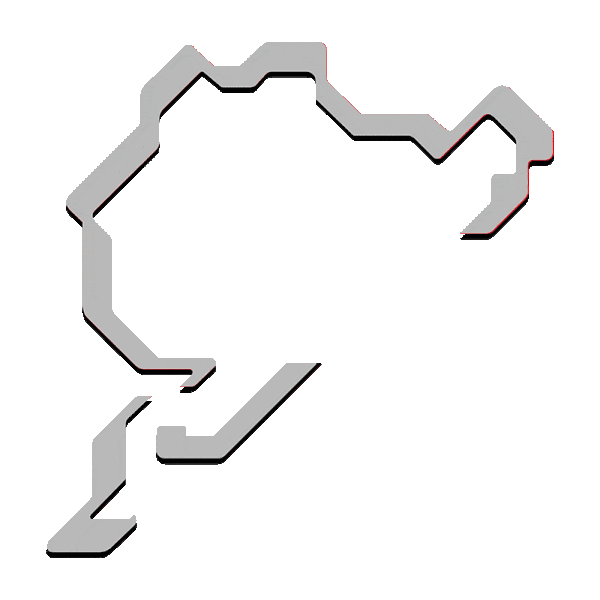
6 minutes 43.300 seconds – Current Record
The production car lap record currently belongs to the Mercedes-AMG ONE with a time of 6 minutes 43.300 seconds, established in October 2022. This figure transcends mere timekeeping—it represents the pinnacle of automotive technology, the boundary between possible and impossible, and the target every manufacturer aspires to conquer.
150,000 Operating Hours Annually
The Nordschleife isn’t just a racetrack—it’s a massive laboratory. With approximately 150,000 operating hours each year dedicated to car manufacturers and racing events, the Nürburgring is one of the world’s busiest circuits, where motorsport history continues to be written daily.
Why Manufacturers Test Drive Here
When Jackie Stewart (surveying the Nürburgring from an airplane) called it “The Green Hell” in 1960, he wasn’t creating a nickname—he was defining its essence. And that’s precisely why the Nürburgring has become the testing holy ground for every respectable car manufacturer.
First, the Nürburgring summarizes virtually every road condition on earth, compressed into 20.8 kilometers. From bumpy surfaces to straights allowing maximum speeds, from blind corners to steep inclines—if a car can conquer the Nürburgring, it can master any road.
Second, the Eifel region’s weather is notoriously harsh and unpredictable. In a single lap, a driver might experience blazing sunshine, sudden downpours, and thick fog. This presents a golden opportunity to test vehicles in all weather conditions without traveling to multiple locations.
Third, the Nürburgring’s unique motorsport culture establishes a stringent standard. When a manufacturer announces their car has completed a Nordschleife lap in a certain time, it transcends the numerical value—it’s a declaration of technical capability, a mark in automotive history.
Finally, the Nürburgring is where legends beget legends. When a car model breaks a record here, it doesn’t just claim glory—it becomes part of motorsport heritage. From Stefan Bellof’s Porsche 956 to modern supercars, each record set at the Nürburgring becomes a chapter in the magnificent book of automotive history.
The Nürburgring stands as the measure of excellence, the fire that tests gold, and the dream of every automotive engineer. In a world where everything can be simulated on computers, the Nordschleife remains an irreplaceable challenge—a trial that is practical, merciless, and brutally honest.
Motorsport racing forms the core competency of the Nürburgring. The circuit represents the fascination of everything automotive, of the maximum performance of humans and machines.
However, the allure of this extraordinary location and its history, with the Nürburgring legend extending far beyond the world of speed, creates an emotional backdrop for other services as well. The Nürburgring hosts high-speed sporting events like the “Speed Meeting at the Start/Finish Line,” “Racing Dinners Among Classic Cars,” and corporate events with unique “Adrenaline Experiences.” Notably, the Nürburgring Driving Academy literally embodies the DNA of the Nürburgring.
Testing Grounds Beyond Nürburgring
When discussing a vehicle’s “forging” process before it reaches its owner, the Nürburgring is often venerated as the Olympus of automotive testing. But in reality, the legendary German circuit is merely one piece in the complex panorama of global vehicle development—a journey that transforms millions of machines from drawings to reality through nature’s most severe trials.
While engines still roar around the Nordschleife’s corners, other prototype vehicles slide and glide on Greenland’s endless ice roads, where temperatures can plummet to -40°C. Here, under the ethereal glow of the Northern Lights, engineers test everything from cold-start engine capabilities to the durability of rubber and plastic components when facing bone-chilling cold. Every “click” of the gear lever, every button on the control panel, must function flawlessly in conditions where a driver’s fingers can barely move.

Thousands of miles away, under the scorching Saharan sun—where sand can corrode metal and cabin temperatures exceed 60°C—different prototype vehicles grapple with completely different challenges. You might spot Mercedes, BMW, or Audi models wrapped in camouflage to deceive prying photographers, roaring across brilliant yellow sand dunes. Here, cooling systems, air conditioning, and dust resistance are pushed to their absolute limits, while air filters face challenges no racetrack could create.
But perhaps the most difficult challenge, though less glamorous than the Nürburgring’s speed or nature’s extremes, lies right beneath our feet—in the crowded streets of Tokyo, New York, Saigon, or Hanoi. In urban environments, prototype vehicles must face the harsh reality of daily traffic: constant stop-start situations in traffic jams, narrow roads, unexpected potholes, and especially the unpredictable behavior of those flowing through traffic.
A BMW engineer once stated: “The Nürburgring tells us what a car can do at the limit. Greenland and the Sahara tell us what it can endure. But it’s the ordinary street that tells us whether customers will love it for the next decade.” That’s why you might accidentally spot a next-generation Porsche Cayenne navigating Manhattan’s streets, or a Subaru BR-Z patiently waiting at a traffic light in Hokkaido.
When the final vehicle appears in showrooms with gleaming paint and that distinctive new-car scent, few realize that behind its perfect appearance lie millions of test kilometers, from ice to desert, from racetrack to street. Every button, every line, every ADAS feature undergoes rigorous testing to ensure that wherever you drive—in Saigon’s summer heat, Phu Quoc’s coastal saltiness, or the cool mists of the Northwest Highlands—the car consistently performs exactly as promised in its advertising content.
